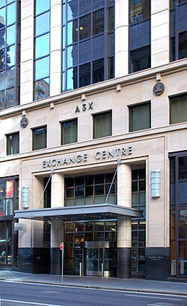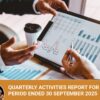Gold prices soaring past $3,400 per ounce. Copper demand set to explode by 330,000 tonnes for data centres alone. Critical minerals are becoming the new oil in geopolitical chess games. In 2025, the global mining finance landscape has never been more dynamic and more crucial for the world’s economic future.
At the heart of this transformation sit the world’s premier stock exchanges, serving as financial lifelines for hundreds of junior exploration companies racing to discover the next generation of mineral deposits. The Australian Securities Exchange (ASX), TSX Venture Exchange (TSXV), and London Stock Exchange’s Alternative Investment Market (AIM) have emerged as the trinity powering global mining finance, each offering distinct advantages for companies at different stages of their exploration journey.
These exchanges don’t just provide capital, they create ecosystems where ambitious explorers can access the hundreds of millions of dollars needed to turn geological theories into producing mines. In an industry where a single discovery can transform a $10 million market cap company into a billion-dollar acquisition target, the choice of exchange often determines success or failure.
The stakes couldn’t be higher. With the International Energy Agency projecting a fivefold increase in lithium demand by 2040 and warning of a 30% copper supply shortfall by 2035, junior mining companies hold the keys to unlocking the minerals essential for electric vehicles, renewable energy infrastructure, and the digital economy. Yet these same companies operate in a paradox, they’re hunting for billion-dollar deposits while running on shoestring budgets, making access to patient capital absolutely critical.
This comprehensive guide examines how three of the world’s most important exchanges support junior mining finance in 2025, revealing the opportunities, risks, and strategies that define this high-stakes sector.
The Critical Role of Exchanges in Junior Mining Finance
Junior mining companies represent the exploration backbone of the global minerals industry. Typically defined as early-stage firms with market capitalisations under $500 million, these companies focus on discovering and defining mineral resources rather than generating revenue from production. Most operate without cash flow from mining operations, instead relying entirely on equity markets to fund their exploration programmes, drilling campaigns, and feasibility studies.
This financial reality creates a unique challenge. While major mining companies like BHP or Rio Tinto can self-fund exploration from their operating cash flows, juniors must convince investors to back geological theories with real money, often millions of dollars, years before any potential production revenue materialises. A single exploration programme might require $5-20 million, while advancing a project through feasibility studies can cost $50-100 million or more.
The mathematics are sobering. Industry statistics suggest that for every 3,000 early-stage exploration projects, only one becomes a producing mine. Yet when juniors do succeed, the returns can be extraordinary. Consider Onyx Gold, which has gained 846% year-to-date in 2025 on the TSXV, or Kali Metals, which soared 75% on its ASX debut in January.
Public exchanges provide the infrastructure that makes this high-risk, high-reward dynamic possible. They offer several critical advantages over private funding:
- Liquidity and Price Discovery: Unlike private placements, exchange-listed shares provide investors with the ability to exit positions, creating more attractive risk-adjusted returns that draw larger pools of capital.
- Regulatory Framework: Listed companies must meet disclosure standards that provide investors with regular updates on exploration progress, financial position, and management decisions. This transparency builds confidence in an inherently speculative sector.
- Analyst Coverage: Exchange listings often attract research analysts who help institutional investors understand complex geological and technical aspects of exploration projects.
- Access to Institutional Capital: Many pension funds, resource-focused funds, and institutional investors can only invest in listed securities, dramatically expanding the potential investor base.
- Currency and Geographic Flexibility: International exchanges allow companies to raise capital in stable currencies while maintaining operations in emerging mining jurisdictions.
The three major exchanges have each developed specialised approaches to serve this market. The ASX leverages Australia’s position as a resources superpower, hosting 734 mining companies and implementing reforms to streamline IPO processes. TSXV has become the global venture capital hub for mining, with 40% of the world’s public mining companies and innovative programmes like Capital Pool Companies that facilitate reverse takeovers. Meanwhile, LSE’s AIM serves as an international gateway, particularly for companies with overseas assets seeking to tap into London’s deep capital markets.
Together, these exchanges have facilitated over $50 billion in mining-related financing in the past five years, creating the financial foundation for the next generation of mineral discoveries. As 2025 unfolds with record commodity prices and unprecedented demand for critical minerals, their role in shaping the global mining finance landscape has never been more important.
Australian Securities Exchange (ASX): The Resources Powerhouse

The Australian Securities Exchange stands as the undisputed global leader in mining finance, hosting 734 mining and metals companies that collectively represent the world’s largest concentration of listed resource firms. This dominance isn’t accidental – it reflects Australia’s unique position as both a geological treasure trove and a sophisticated financial market that understands the complexities of resource development.
2025 Market Performance: Resilience Amid Volatility
Despite broader market uncertainties, ASX-listed explorers attracted $1.57 billion in financing during the first quarter of 2025. While this represented a 45% decline from the previous quarter, the figures tell a more nuanced story. Gold explorers alone secured $621 million, demonstrating strong investor appetite for precious metals projects amid global geopolitical tensions.
The quarter’s standout success was Kali Metals, which soared 75% on its January debut following a demerger from Kalamazoo Resources. The lithium-focused explorer raised $15 million and closed its first trading day with a market capitalisation of $62.70 million, setting an optimistic tone for 2025 resource IPOs.
Perhaps more significantly, Robex Resources completed a substantial $120 million IPO in June 2025, demonstrating that institutional appetite exists for well-advanced projects. The West African gold producer’s successful ASX debut, despite also being listed on TSXV, underscores the exchange’s appeal for companies seeking broader capital access.
These successes gained additional momentum from ASIC’s 2025 IPO reforms, which streamlined listing processes and reduced timelines for resource companies. The reforms specifically addressed pain points that had deterred some mining entrepreneurs from pursuing ASX listings, creating a more efficient pathway to public markets.
Listing Framework: Balancing Access with Standards
The ASX’s approach to mining company listings reflects decades of experience in resource finance. Unlike exchanges that apply one-size-fits-all requirements, ASX has developed a framework specifically tailored to the realities of exploration-stage companies.
Central to this framework is compliance with the JORC Code, the internationally recognised standard for reporting mineral resources and ore reserves. This requirement ensures that investors receive technically sound information about project potential, while companies benefit from global recognition of their resource estimates.
Financial requirements remain accessible for genuine exploration companies. The minimum $1.1 million working capital requirement acknowledges that early-stage explorers don’t generate revenue, instead focusing on ensuring sufficient funds for meaningful exploration programmes. This contrasts sharply with revenue-based requirements that might exclude innovative but pre-production companies.
The exchange’s flexibility extends to accepting companies with projects in established mining jurisdictions worldwide. Australian-listed companies operate across six continents, from Canadian gold projects to African copper deposits, providing investors with truly global exposure through the familiar ASX regulatory environment.
Success Stories: What IPO Performance Reveals
The recent performance of ASX mining debuts offers valuable insights into market dynamics. Junior mining companies have dominated the 2025 IPO calendar, with five of six upcoming listings focused on resources. This concentration reflects both investor confidence in the sector and the ASX’s reputation as the preferred venue for mining finance.
Infini Resources, planning a January listing under ticker I88, exemplifies the current focus on critical minerals. The uranium and lithium explorer’s $5.5 million raise targets growing demand for nuclear energy and battery materials. Similarly, Golden Globe Resources raised $6 million for Queensland and Western Australian gold projects, capitalising on bullion’s record-breaking performance.
Investor Opportunities: Access and Coverage
For investors, the ASX provides unparalleled access to mining opportunities across the risk spectrum. With over 900 mining listings ranging from early-stage explorers to major producers, the exchange offers exposure to virtually every commodity and development stage.
The depth of analyst coverage sets ASX apart from smaller exchanges. Major broking houses maintain dedicated resources teams, providing institutional-quality research that helps investors navigate complex technical and geological factors. This coverage proves particularly valuable given the specialised knowledge required to evaluate exploration projects.
Global institutional recognition further enhances liquidity and price discovery. International funds regularly participate in ASX mining placements, creating a truly global market for Australian-listed resource companies. This international dimension often translates into premium valuations for quality projects compared to purely domestic markets.
As 2025 progresses, the ASX’s combination of regulatory sophistication, global reach, and deep resource expertise positions it as the premier destination for mining companies seeking to access international capital markets. The exchange’s proven track record in supporting companies from grassroots exploration through to multi-billion-dollar production makes it an essential component of the global mining finance ecosystem.
TSX Venture Exchange (TSXV): The Global Venture Capital Hub

If the ASX represents mining finance’s established powerhouse, the TSX Venture Exchange embodies its entrepreneurial spirit. Operating as part of TMX Group, TSXV hosts an extraordinary 40% of the world’s public mining companies, making it the undisputed global centre for venture-stage resource investment.
This remarkable concentration reflects Canada’s unique mining culture, where risk-taking entrepreneurs and patient capital converge to fund the next generation of discoveries. From the gold fields of Ontario to the diamond mines of the Northwest Territories, Canada’s geological endowment provides the foundation for what has become the world’s most sophisticated junior mining finance ecosystem.
2025 Performance: A Tale of Resurgence
The year 2025 has marked a dramatic turnaround for TSXV mining finance. January equity financings surged 52% year-over-year, signaling renewed investor confidence after several challenging years. This momentum gained strength as gold prices broke successive records, with Canadian gold reaching $4,663.85 per ounce in June.
The revival’s poster child is Onyx Gold, which has delivered a staggering 846% year-to-date return, transforming from a modest explorer into a $122.48 million market capitalisation company. The Toronto-based firm’s Munro-Croesus project near Timmins, Ontario, exemplifies how strategic land acquisitions can create explosive value in bull markets.
Onyx’s success story gained momentum through two key developments. In April, the company secured option agreements for a 21-hectare patented claim near its Argus North zone for $1.5 million plus 3.3 million shares. Then in June, it acquired the Munro and Hewitt properties, expanding its land package from 95 to 109 square kilometres and consolidating control over historically productive ground.
Other standout performers include Trident Gold (formerly Eros Resources), which engineered a three-way merger to consolidate Saskatchewan gold assets, and various explorers capitalising on safe-haven demand amid Middle Eastern geopolitical tensions.
Two-Tier Architecture: Flexibility Meets Growth
TSXV’s innovative two-tier structure addresses the reality that not all companies arrive at public markets with identical capabilities or resources. This nuanced approach has become a model for venture exchanges worldwide.
Tier 1 serves more established juniors with stronger financial foundations. These companies enjoy enhanced trading privileges, reduced regulatory burdens, and greater operational flexibility. Requirements include minimum net tangible assets and demonstrated management capability, but remain accessible to genuine exploration companies with viable projects.
Tier 2 welcomes earlier-stage companies that might struggle to meet traditional listing requirements. Minimum net tangible assets of just $750,000 and working capital for 12-18 months create an accessible entry point for promising entrepreneurs. The tier structure includes built-in graduation incentives, encouraging companies to strengthen their operations and advance to Tier 1 or ultimately the main TSX board.
This graduation pathway has proven remarkably successful. Over 300 mining companies have graduated from TSXV to TSX since 2000, demonstrating the exchange’s effectiveness as a development platform for resource companies.
Capital Pool Companies: Innovation in Action
Perhaps TSXV’s most distinctive feature is its Capital Pool Company (CPC) programme, which has raised $8.9 billion over five years. This innovative mechanism allows experienced management teams to raise capital before identifying specific assets, then use those funds for reverse takeover transactions.
The CPC structure addresses a fundamental challenge in junior mining finance: proven management teams often struggle to raise sufficient capital for competitive asset acquisitions, while asset holders lack the public market expertise to access growth capital. By separating capital raising from asset acquisition, CPCs create more efficient transactions and better outcomes for all parties.
Under CPC rules, 90% of raised funds must be held in escrow and deployed within 36 months for a Qualifying Acquisition. This structure protects investors while providing management teams with the financial firepower needed to secure quality assets in competitive processes.
Market Depth and Global Recognition
TSXV’s liquidity metrics underscore its global significance. The exchange recorded 43 billion shares traded in 2024, creating genuine price discovery for even small-cap exploration companies. This trading volume attracts over 250 analysts who provide research coverage, helping institutional investors navigate the complex technical factors that drive mining investment decisions.
The exchange’s international reach extends far beyond Canada’s borders. TSXV-listed companies operate projects across six continents, while investor participation includes major institutions from Asia, Europe, and Australia. This global dimension often translates into premium valuations for quality projects, as international investors recognise TSXV’s regulatory standards and market efficiency.
Recent dual-listing activity highlights this international appeal. Multiple companies have pursued TSXV-OTCQB combinations to access both Canadian venture capital and US retail investors, while others have added TSXV listings to complement primary listings on ASX or European exchanges.
As 2025 unfolds, TSXV’s combination of accessible listing requirements, innovative financial structures, and global investor reach positions it as the premier destination for venture-stage mining investment. The exchange’s proven ability to incubate companies from startup through to TSX graduation makes it an essential component of the global mining finance ecosystem.
London Stock Exchange’s AIM: The International Gateway

LSE Headquarters Paternoster Square
The London Stock Exchange’s Alternative Investment Market occupies a unique position in global mining finance, serving as Europe’s premier growth market while navigating one of the most challenging periods in its 30-year history. Despite facing headwinds that have reduced company numbers to historic lows, AIM remains a crucial gateway for international mining companies seeking access to London’s sophisticated capital markets.
2025 Market Reality: Signs of Recovery Amid Structural Challenges
The numbers tell a sobering story of market contraction. AIM ended 2024 with just 688 companies, down from nearly 1,700 at its 2007 peak. This dramatic decline reflects multiple factors: companies delisting, moving to the main London Stock Exchange, or being acquired at rates that consistently exceeded new listings.
However, 2025 has brought encouraging signs of recovery. Five companies have completed IPOs in the first months of 2025, already representing nearly half of 2024’s total listing activity. Corporate partner Tom Bacon at BCLP notes significant engagement from companies exploring London’s public markets, suggesting “the return of some of that latent demand for going public as the market begins to open.”
The recovery gains additional significance from LSE’s comprehensive review of AIM regulations. Published in April 2025, the “Shaping the Future of AIM” discussion paper addresses regulatory burdens that have made AIM less competitive compared to the reformed Main Market listing rules. The consultation seeks to reduce admission costs and ongoing regulatory requirements while maintaining investor protections.
The Nomad System: Guidance with Accountability
AIM’s distinctive Nominated Adviser (Nomad) system sets it apart from other exchanges worldwide. Unlike traditional sponsors who provide services for specific transactions, Nomads maintain ongoing relationships with AIM companies, providing continuous guidance on regulatory compliance, corporate governance, and strategic decisions.
For mining companies, this relationship proves particularly valuable given the complex technical, environmental, and geopolitical factors that influence resource projects. Nomads often possess deep sector expertise, helping companies navigate everything from reserve reporting standards to stakeholder engagement in challenging jurisdictions.
The system also creates accountability. Nomads face regulatory consequences if their clients fail to meet AIM requirements, ensuring ongoing oversight that benefits investors while supporting company development. This dual role of adviser and gatekeeper has contributed to AIM’s reputation for maintaining standards despite lighter regulatory requirements compared to main market listings.
Tax Incentives: The Competitive Edge
AIM’s tax treatment provides significant advantages for UK-based investors that international exchanges cannot match. Business Relief from inheritance tax allows shares held for two years to qualify for 100% relief, making AIM attractive for long-term investors and family offices. Although Chancellor Rachel Reeves reduced this relief earlier in 2025, significant benefits remain.
Enterprise Investment Scheme (EIS) and Venture Capital Trust (VCT) reliefs provide additional incentives for qualifying companies, while ISA eligibility allows retail investors to hold AIM shares in tax-free accounts. These structures have historically attracted substantial UK investment into early-stage companies, creating a natural home market for growth-oriented businesses.
International Mining Appeal: Global Assets, London Capital
For mining companies with international assets, AIM offers compelling advantages. London’s status as a global financial centre provides access to institutions familiar with emerging market risk, commodity price volatility, and complex cross-border structures. Many UK pension funds, insurance companies, and resource-focused investment managers actively seek exposure to mining projects worldwide.
The exchange has particularly attracted companies with African, Latin American, and Asian assets seeking European capital. Recent examples include mining companies using AIM as preparation for eventual moves to main market listings as their projects advance from exploration through development to production.
Challenges and Strategic Response
AIM faces intensifying competition from multiple directions. The LSE’s July 2024 reforms to Main Market listing rules reduced barriers for smaller companies, potentially redirecting some AIM candidates to the senior market. Brexit has complicated access for European companies and investors, while regulatory uncertainties have deterred some potential listings.
The exchange is responding with fundamental rule reviews addressing working capital requirements, reverse takeover rules, and disclosure obligations. Proposals include simplifying the Nomad system, reducing overlap with UK Market Abuse Regulations, and offering streamlined corporate governance options for different company stages.
As 2025 progresses, AIM’s success will depend on implementing reforms that restore competitiveness while preserving the investor protections and market integrity that underpin its global reputation. For mining companies seeking international capital, AIM remains a proven pathway to London’s deep and sophisticated investment community.
The 2025 Critical Minerals Context
The mining finance renaissance of 2025 isn’t occurring in isolation, it reflects a fundamental shift in global resource demand driven by the energy transition, artificial intelligence boom, and escalating geopolitical tensions. Understanding this context reveals why junior exploration companies have become critical players in securing the world’s economic future.
Unprecedented Demand Growth
The International Energy Agency’s Global Critical Minerals Outlook 2025 paints a picture of explosive demand growth that dwarfs historical precedents. Lithium demand is projected to increase fivefold by 2040, while copper, already the backbone of electrical infrastructure, faces 30% growth over the same period.
These aren’t abstract projections. Real-world applications are driving tangible demand today. The artificial intelligence revolution alone requires between 330,000 and 420,000 tonnes of copper for data centres by 2030, representing entirely new demand that didn’t exist five years ago. Electric vehicle batteries, renewable energy installations, and grid modernisation programmes collectively create what industry experts describe as a “perfect storm” of mineral consumption.
The scale of required investment is staggering. Industry analysis suggests the sector needs $360-450 billion in investment by 2030, with a potential gap of $180-270 billion. To put this in perspective, achieving 2030 net-zero targets may require 80 new copper mines, 70 new lithium and nickel mines each, and 30 new cobalt mines.
Supply Chain Vulnerabilities Intensifying
While demand explodes, supply concentration has paradoxically increased rather than diversified. The average market share of the top three mining countries for key energy minerals rose from 73% in 2020 to 77% in 2024, with China, Indonesia, and the Democratic Republic of Congo dominating critical supply chains.
This concentration creates profound vulnerabilities. IEA analysis using “N-1” scenarios, where the largest supplier is completely removed, reveals alarming gaps. For graphite and rare earth elements, remaining supplies would cover only 35-40% of demand, making these materials extremely vulnerable to supply disruptions.
Copper presents perhaps the most concerning outlook. Despite being essential for virtually all clean energy technologies, current mine project pipelines point to a potential 30% supply shortfall by 2035. This deficit reflects declining ore grades, rising capital costs, limited new discoveries, and increasingly long development timelines.
President Trump’s March 2025 Executive Order on Critical Minerals underscores the strategic urgency. The order expands the US critical minerals list to include copper, uranium, gold, and potash, while mobilising Defense Production Act funding through new mechanisms. This policy shift signals that mineral security has become a national security imperative for major economies.
Investment Reality Check
Despite urgent demand projections, investment momentum in critical mineral development weakened in 2024. Spending increased by just 5%, down from 14% growth in 2023. When adjusted for cost inflation, real investment growth was merely 2%.
Exploration activity plateaued in 2024, marking a pause in the upward trend since 2020. While exploration spending continued rising for lithium, uranium, and copper, it declined notably for nickel, cobalt, and zinc. Start-up funding also showed signs of slowdown, creating potential long-term supply risks.
The disconnect between urgent demand and modest investment reflects current market realities. Low mineral prices aren’t providing investment signals, and projects involving new entrants have been most affected by uncertainty. This paradox, urgent long-term need versus weak short-term investment incentives, creates the context where junior exploration companies become absolutely critical for future supply security.
This dynamic explains why stock exchanges have become battlegrounds for mining finance. The companies that successfully access capital today will determine whether the world can secure sufficient critical minerals for the energy transition, technological advancement, and economic security of the 2030s and beyond.
Investment Opportunities and Success Stories
The convergence of record commodity prices and enhanced exchange accessibility has created a golden age for mining investment opportunities across all three major exchanges. Each platform offers distinct advantages for investors seeking exposure to the critical minerals boom, with success stories demonstrating the sector’s wealth creation potential.
High-Performing Companies by Exchange
ASX Success Stories: The Australian exchange continues producing standout performers that capture global attention. De Grey Mining’s remarkable $279.7 million raise in Q1 2025 demonstrated institutional appetite for advanced gold projects, while Orezone Gold’s successful ASX IPO completion in August 2025 showcased the exchange’s appeal for international companies seeking Australian capital.
The lithium sector has particularly benefited from ASX’s resource expertise. Kali Metals’ 75% debut surge reflects growing recognition that battery minerals companies require exchanges with deep geological understanding and global institutional reach.
TSXV Breakthrough Performers: Canada’s venture exchange has delivered the year’s most spectacular individual returns. Onyx Gold’s extraordinary 846% year-to-date performance transforms it from unknown explorer to $122.48 million success story, demonstrating how strategic land consolidation can create explosive value in bull markets.
The broader junior gold renaissance on TSXV reflects the exchange’s unique ecosystem where risk-tolerant capital meets geological expertise. Companies like Trident Gold, formed through strategic three-way mergers, illustrate how TSXV’s flexible structure enables corporate creativity that might struggle on more rigid exchanges.
LSE/AIM International Gateway: Despite market challenges, AIM continues attracting mining companies seeking European capital access. Greatland Gold’s advanced dual listing strategy exemplifies how companies use AIM as a stepping stone to broader international recognition, while maintaining access to UK tax-advantaged investment schemes.
Companies like Kodal Minerals focus on lithium projects that benefit from AIM’s international investor base familiar with African mining jurisdictions and complex cross-border structures.
Sectors Driving Growth
Gold: The Safe-Haven Premium: Record gold prices reaching $4,663.85 per ounce have created a perfect environment for gold explorers. The sector benefits from both traditional safe-haven demand amid geopolitical tensions and growing recognition that many gold projects contain critical minerals as by-products.
Critical Minerals: Supply Chain Security Premium: Copper, lithium, and rare earth explorers command premium valuations reflecting supply security concerns. Companies with projects in stable jurisdictions particularly benefit from investment flows seeking alternatives to concentrated supply chains.
Battery Metals: Energy Transition Tailwinds: The IEA’s projection of fivefold lithium demand growth creates compelling investment narratives for battery mineral explorers, especially those with near-term production potential.
Geographic Hotspots
Australian Projects: Companies with Australian assets benefit from the country’s stable regulatory environment, established mining infrastructure, and proximity to Asian demand centres. The jurisdiction’s proven geological potential across multiple commodities provides diversification opportunities.
Canadian Assets: Projects in established Canadian mining camps leverage existing infrastructure, skilled workforces, and proximity to North American manufacturing centres increasingly focused on supply chain security.
Strategic International Assets: Well-managed companies with assets in emerging markets can access premium valuations by offering exposure to underexplored geological terranes while maintaining listing standards of developed market exchanges.
The key to success lies in matching company characteristics with appropriate exchange advantages, leveraging ASX’s resource expertise, TSXV’s venture capital ecosystem, or AIM’s international gateway function to access the most suitable capital for each project’s development stage.
Risks and Considerations for Investors
While the mining finance renaissance offers compelling opportunities, investors must navigate substantial risks inherent to junior exploration companies. Understanding these challenges proves essential for successful portfolio construction in this volatile but potentially rewarding sector.
Market Volatility and Liquidity Challenges
Junior mining stocks typically experience annual price swings of 50-70%, making them unsuitable for conservative portfolios. This volatility reflects multiple factors: commodity price fluctuations, exploration success or failure, management changes, and broader market sentiment toward resource sectors.
Liquidity presents additional challenges, particularly for smaller explorers. Low trading volumes can make position exits difficult during market stress, creating forced holding periods that may not align with investment timelines. This illiquidity premium demands compensation through higher expected returns but requires patient capital approaches.
Financing Risks and Dilution
The fundamental reality of junior mining, no revenue until production, creates constant financing pressure. Companies typically require multiple capital raises throughout exploration and development phases, often resulting in significant shareholder dilution. Burn rate management becomes critical, as companies must balance aggressive exploration programmes with cash conservation.
Successful companies often raise capital opportunistically during strong markets, creating dilution when share prices are elevated. Conversely, companies forced to raise during weak markets may issue shares at deeply discounted prices, severely impacting existing shareholders.
Operational and Geopolitical Challenges
Modern mining faces increasing complexity beyond traditional geological risks. Resource nationalism and changing regulatory environments can dramatically impact project economics, particularly in emerging market jurisdictions with substantial mineral endowments.
Environmental permitting timelines continue extending, while community engagement requirements have become more sophisticated and time-consuming. Declining ore grades across most commodities increase capital intensity and operational complexity, making project development more challenging and expensive.
Due Diligence Essentials
Successful junior mining investment requires rigorous technical evaluation. NI 43-101 technical reports for Canadian companies and JORC-compliant resource estimates for Australian projects provide standardised frameworks for resource evaluation, but investors must understand their limitations and underlying assumptions.
Management track records prove crucial given the sector’s dependence on execution capability. Teams with proven experience in similar jurisdictions and commodity types typically outperform those lacking relevant expertise.
Portfolio Construction Guidelines
Industry experts recommend limiting junior mining exposure to 5-10% of total portfolio allocation, recognising both the sector’s potential returns and inherent risks. Diversification across commodities, development stages, and geographic regions helps mitigate single-project risk while maintaining upside exposure.
Timing considerations become particularly important given the sector’s cyclical nature. Bull market periods often provide 5-10x return opportunities for successful companies, while bear markets can deliver devastating losses. Understanding market cycles and positioning accordingly can significantly impact investment outcomes.
Looking Ahead: Trends and Catalysts for 2025-2026
The mining finance landscape enters a transformative period as regulatory reforms, policy initiatives, and technological advances converge to reshape how junior exploration companies access capital and develop projects.
Exchange Reforms Driving Competitiveness
ASIC’s 2025 IPO reforms represent just the beginning of regulatory modernisation across major exchanges. The streamlined processes that reduced listing timelines and costs for Australian resource companies signal broader trends toward exchange competitiveness.
LSE’s comprehensive AIM rule review addresses fundamental concerns about regulatory burden and market competitiveness. Proposed changes to working capital requirements, reverse takeover rules, and Nomad responsibilities could reinvigorate London’s junior mining ecosystem by 2026.
Policy Tailwinds Accelerating
President Trump’s Critical Minerals Executive Order represents the most significant US policy shift toward domestic mineral development in decades. The mobilisation of Defense Production Act funding through dedicated mineral investment programmes creates substantial non-dilutive financing opportunities for North American projects..
Market Catalysts Building Momentum
Gold’s continued strength, driven by geopolitical tensions and monetary policy uncertainty, supports sustained institutional interest in precious metals explorers. The metal’s breakthrough past $3,400 per ounce creates psychological momentum that typically extends for multiple years.
Critical minerals demand acceleration from AI infrastructure, electric vehicle adoption, and renewable energy deployment provides fundamental support for copper, lithium, and rare earth projects, regardless of short-term price volatility.
Corporate consolidation activity continues to build as major mining companies seek to replace depleting reserves. This acquisition appetite creates clear exit strategies for successful junior companies, supporting investment case development across all three exchanges.
The convergence of these trends suggests 2025-2026 could mark an inflection point where patient capital investment in quality junior mining companies generates exceptional returns for those able to navigate the sector’s inherent risks and complexities.












